8 Recession-Proof Projects to Have on Your Property
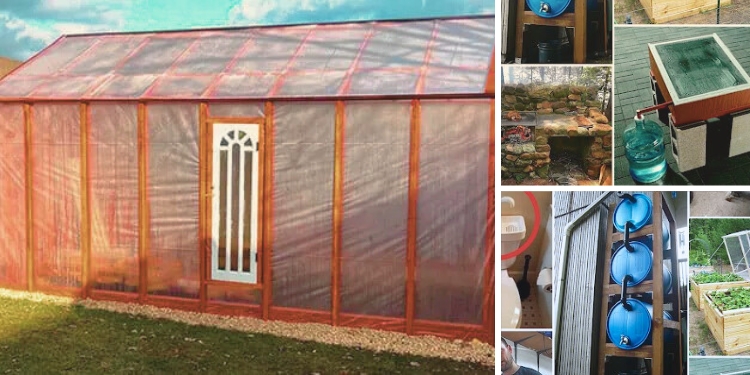
Recessions where the national or global economy retracts can cause financial problems on every scale imaginable. Things like a potential job loss, prolonged unemployment, high prices, strained family finances, and more can all hit hard. We have to be prepared for any possible crisis so these recession-proof projects should be seriously taken into account.
Out of all that you can do on your property, there are some strategic projects you can implement today, and into the future gain immense benefits, especially if a recession hits. The sooner the better! Some can even help you weather hard times to get through the recession and all its aftermath.
A Home Garden with Fruit & Nut Trees
 A large garden is quite possibly the best recession-proof project you can have on your property. It gives you the ability to feed yourself at the cost of sweat equity, which can be worth much more than the dollar during desperate financial times.
A large garden is quite possibly the best recession-proof project you can have on your property. It gives you the ability to feed yourself at the cost of sweat equity, which can be worth much more than the dollar during desperate financial times.
When I was a boy, Grandma made me learn how to garden and cook from what was in season. When I asked her why she said “Because someday the world is gonna go crazy again, and I want you to know how to feed yourself!” During the 2008 recession and the pandemic, my home garden kept my grocery bills for my small family under $30 a week!
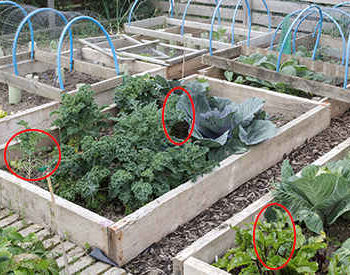 Ideally, you want to grow heirloom vegetables that allow you to save the seeds. Then develop a gardening strategy that not only maximizes seasonality but also makes use of succession planting and companion planting.
Ideally, you want to grow heirloom vegetables that allow you to save the seeds. Then develop a gardening strategy that not only maximizes seasonality but also makes use of succession planting and companion planting.
Fruit and nut trees, as well as resilient berries, like raspberries, also make a lot of sense. If you shop around, you can often find varieties that will produce their first bounty in 3 to 4 years after planting. The fruits will provide you with an influx of vitamins and antioxidants for healthy living.
Nut trees like butternuts can start to produce in 3 to 4 years and have an amino acid profile that pairs perfectly with dairy to create complete proteins. It’s a great alternative protein source in times when recession meat prices are insanely high, and the game might not be readily available.
Greenhouse or Cold Frames
 Building a greenhouse or even some simple cold frames from upcycled windows and plexiglass is one of the recession-proof projects that will pay for themselves by lowering your grocery costs. This gives you the ability to start your vegetables outside four to six weeks earlier. As well as start your own seedlings without having to pay exorbitant garden center prices.
Building a greenhouse or even some simple cold frames from upcycled windows and plexiglass is one of the recession-proof projects that will pay for themselves by lowering your grocery costs. This gives you the ability to start your vegetables outside four to six weeks earlier. As well as start your own seedlings without having to pay exorbitant garden center prices.
==>>Click Here to learn about 75+ DIY Projects For A Self Sustaining Backyard
Then in the fall, you can use the greenhouse or cold frames to extend the season for key plants and container-grown vegetables. With some strategic placement and planning, you can add as much as 6 to 8 weeks to your growing season.
One of my favorite tricks is to spray paint an old 5-gallon bucket black and fill it with water. During the day the sun warms up the water which then acts like a heatsink to keep a freak frost or hard freeze from killing the plants in the cold frame. I’ve had times when this strategy worked right up till the first snowfall of winter.
Build a Chicken Coop
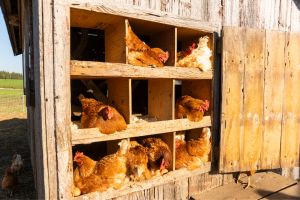 A chicken coop is one of those recession-proof home improvement projects that will pay for itself in the long run. Assuming it’s legal for you to keep chickens where you live.
A chicken coop is one of those recession-proof home improvement projects that will pay for itself in the long run. Assuming it’s legal for you to keep chickens where you live.
The coop doesn’t need to be massive. Six laying hens will provide more than enough eggs for a family of four. It’s a great way to ensure your family has access to a reasonable amount of protein. You can even get creative with the eggs in ways that stretch over resources like bread pudding and custard desserts.
Related: 8 Ingenious DIY Chicken Projects
A dozen hens will give you enough extra eggs that you can sell or trade them with your neighbors. The hens will even lay eggs happily without the presence of a noisy, bothersome rooster.
The coop for 6 hens only needs to be around 20 to 24 square feet. Then you’ll need a chicken run pen that’s roughly double that. You can then cut the cost of their chicken feed in half or more by giving them weeds from the garden, and vegetable chicken scraps.
Install Rain Collection & Water Conservation Systems
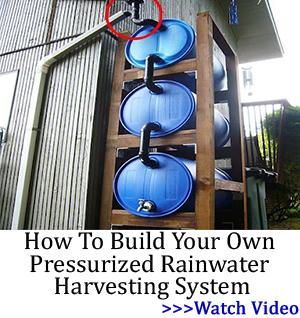 Installing rain barrels and water collection systems is another handy way to help your property become recession-proof. However, this isn’t as much about collecting potable water to reduce your municipal water bill.
Installing rain barrels and water collection systems is another handy way to help your property become recession-proof. However, this isn’t as much about collecting potable water to reduce your municipal water bill.
These days the bulk of a municipal water bill comes from service fees, random markup services, and taxes than the actual water you use for bathing and washing. What rain catchment systems do is dramatically reduce the cost of the water you need for your recession-proof garden and any animals you care for.
You can start with a simple rain barrel under a gutter spout. Depending on where you live and the season, a good rainstorm can give you enough water to keep a patio garden vibrant for a week or more.
You can expand this to include all the gutters on the house as well as the garage. Any outbuildings like a pole barn or a large garden shed are bonus gallons.
Pro Tip
When I first started developing my old hobby farm I did not even consider recession-proof projects. I didn’t have water in my sandy-soil garden during the first summer. I wasted a lot of time and money because of it, trying to haul water from miles away. Fortunately, I read the No Grid Survival Projects Guide and I figured out I can easily solve the problem.
I created a wooden cradle for the box of my truck that would hold two 55-gallon barrel drums. $12 worth of plumbing hardware made it possible to attach a spigot and hose. Then I could draw water from the main rain barrel at the house. Drive the drums out to my garden in the evening and connect them all to the soaker hoses.
Small Game Traps
 During a recession, the price of meat is often staggeringly high and can be prone to staggering fluctuations. One of the easiest ways to keep protein coming in is to harvest small game like squirrels and rabbits
During a recession, the price of meat is often staggeringly high and can be prone to staggering fluctuations. One of the easiest ways to keep protein coming in is to harvest small game like squirrels and rabbits
If you can’t hunt small game on your property, it might be legal to trap them. If you’re not a proficient trapper, this can be a long-term project that takes time to learn. Especially if you’re working with primitive traps like snares and deadfalls, without any mechanical traps.
Related: How To Slaughter And Field Dress A Rabbit For Survival
You need to know how to deal with the incidental skunk, and how to release an angry porcupine from a snare with your cuticles intact. You need to refine your skills in trap setting and placement. Then master the art of harvesting the meat with minimal waste.
I understand that for some people the idea of trapping and eating small game might make you feel a little squeamish. Yet people traditionally hardscrabble areas like the Ozarks, and the Appalachian Mountains, will share their recipes for squirrel pot pie and rabbit stew.
Build a Root Cellar
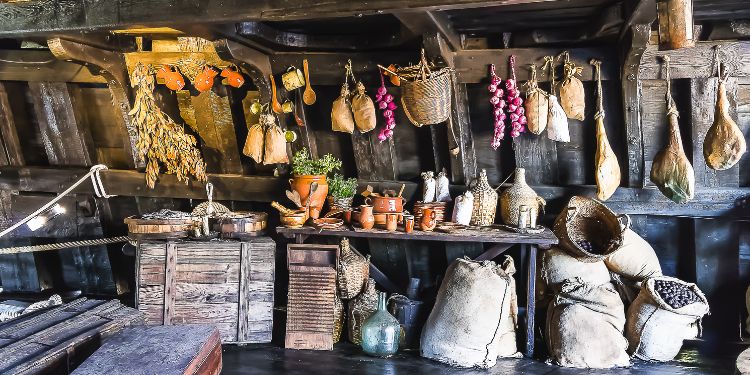 A root cellar is one of those projects that will insulate you against recession food costs by letting you maximize your food storage space. It lets you put up produce you get from your newly expanded gardens and burgeoning orchards. Not to mention giving you a place to store extra foods you buy in bulk.
A root cellar is one of those projects that will insulate you against recession food costs by letting you maximize your food storage space. It lets you put up produce you get from your newly expanded gardens and burgeoning orchards. Not to mention giving you a place to store extra foods you buy in bulk.
You could try to convert a section of your basement into a root cellar, but this can be a challenge depending on your type of basement. There could also be zoning and HOA issues.
Ideally, a root cellar needs to be at least 8’ X 8’ and the ceiling should be at least two feet underground. However, deeper will give you even better temperature control and consistency, which can be important if you get hot, dry summers. Just bear in mind that the deeper you go, the more robust the roof support structure needs to be!
Concrete blocks are the easiest to install and least likely to suffer mold issues. They’re also something you can install yourself, which typically isn’t the case with walls made from poured concrete.
And if you are really serious about building a long-lasting, perfectly-organized root cellar, we recommend the Easy Cellar guide by Tom Griffith. It gives you all the plans you need to build and so much extra information, like:
- How to hide the entrance to your root cellar
- What to store in your root cellar
- How to build a root cellar that doubles as a storm shelter
- How to safely store large quantities of water
- How to create the perfect ventilation system for your hidden root cellar
- How to survive in your root cellar after a nuclear blast
- Natural remedies for radiation
- And much more
Because you are readers of Ask A Prepper, you can get the Easy Cellar guide at a very high discount price, together with two extra books, “56 Items That You Should Stockpile In Your Easy Cellar” and “America’s Natural Nuclear Bunkers – Find The Closest One To Your Home“. All this for just $37, with a 60 days money back guarantee. Buy the bundle while stocks last here:

Add Solar Panels to Your Home
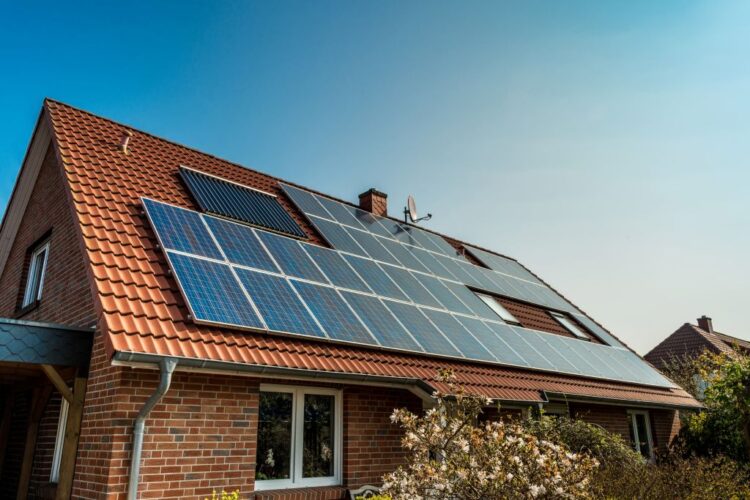 Adding solar panels to your home or property is another great way to insulate yourself from the typically high utility prices that occur during a recession. Not only does it give you some added grid independence, but on good days, you might even be able to sell electricity back to the utility company.
Adding solar panels to your home or property is another great way to insulate yourself from the typically high utility prices that occur during a recession. Not only does it give you some added grid independence, but on good days, you might even be able to sell electricity back to the utility company.
With enough properly installed panels, and some long sunny days, your electric bills could start going down, while everyone else’s are going up. If you use propane for some of your appliances, like a stove, or a clothes dryer, you could save even more money by switching over to an electric equivalent.
There are a lot of factors to consider when determining the size of the solar panels you need to make your home 100% energy independent. This includes the type and energy efficiency/production of the panels. Their placement and available sunlight in your area on an average day. Then you also have to factor that against your energy usage in an average day.
You should also consider having a good solar-powered electricity generator in your home. A great example of that is the Modular Power Plant. There are 3 sizes available and you can build your own without having to spend a lot of money. For the price of a regular small gasoline generator, you can build your own small power plant that can power your entire home in the event of an emergency for up to one week with electricity stored from solar panels. Learn more about this revolutionary product HERE.
Quick Trick Few People Know About:
Converting a Section of Your Home into a Designated Office Space
You can add a little recession-proofing value to your annual taxes by converting a small portion of your home into an office space. Taxes usually go up at some point in a recession, and then they’re offset for some with innovative deductions or tax credits.
Of them, the home office deduction is one of the easiest to qualify for. It allows you to deduct expenses for a portion of your home that’s exclusively used for business. It can then help offset other costs such as mortgage interest, utilities, property taxes, and sometimes even homeowners’ insurance.
It allows you to deduct up to $5 per square foot of your home office, up to 300 square feet, for a maximum potential deduction of $1,500. You can claim it each year, assuming you have a secondary stream of income. This includes gigging where you need a home office space, a place to keep inventory for your self-employed job, or similar home office uses.
Final Thoughts
There are a lot of DIY recession-proof projects that can help insulate your bottom line against a future global crisis. Some of them like making or expanding a home garden, along with cold frame gardening are super cheap, and make sense in the here and now.
Others like building a root cellar on the property or adding solar panels can be a more serious undertaking. Yet they will still pay for themselves in the long term and will give you a sigh of relief when the next recession hits.
Yet even simple things like building a chicken coop to supply the family with eggs or converting a spare room into an office can help you save money now. Then their recession-proof value can keep you afloat when tough times do loom large.
You may also like:
 When This Happens, The Economic Collapse Will Begin
When This Happens, The Economic Collapse Will Begin
How to Outlive an EMP the Early Pioneer Way (Video)
$10 Recipes That Will Keep Your Family Well Fed During Crisis
9 Terrifying Truths About Long-Term Economic Crises
Homemade Water Wheel Electric Generator
Read the full article here

